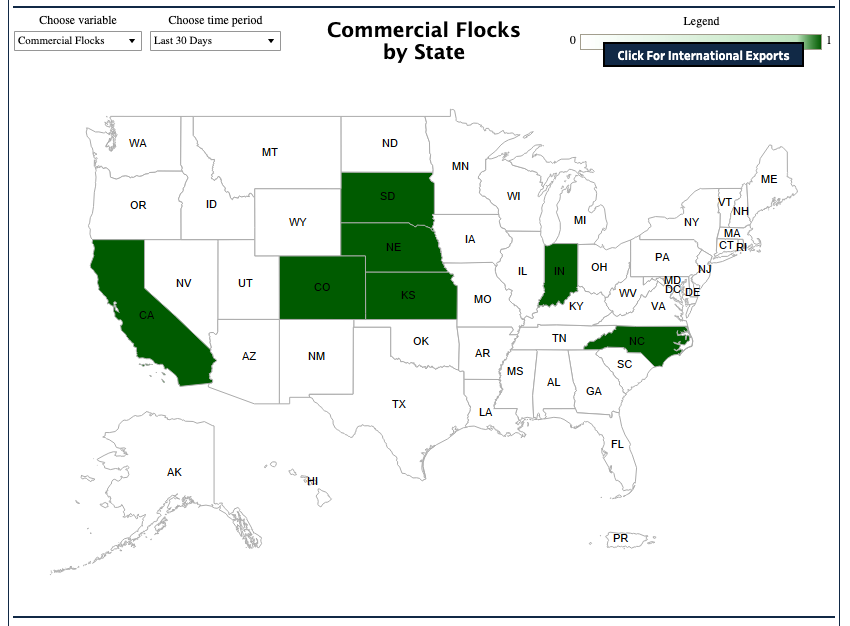By Anita Martin
Some 81,800,000 birds between February, 2022, and today have succumbed across the U.S. to avian flu, according to the Center for Disease Control and Prevention. Over the last three months alone, 349,456 birds in Wisconsin have been lost.
These numbers don’t begin to reflect what wildlife experts believe to be an unknown tally of wild birds which have perished globally. Perhaps more than 200,000,000 birds, possibly as high as 300 million, of more than 200 species have already died.
This might seem particularly doomy and gloomy given our recent celebration of love: Valentine’s Day. However, if we love our birds, and care about our communities, ecosystems, economies, farmers, agricultural workers, and other neighbors, we should take heed of these statistics.
During a recent conversation held in the media, a professional cited the 2015 avian influenza outbreak and asked what comparisons might be drawn between the H5N2 virus devastation and response, which, as noted during the conversation, were vastly different in a number of ways from the H5N1 outbreaks recently experienced, as well as risks we are facing now.
What was different between the Jefferson County bird flu outbreaks nearly 9 years ago and the 2022 outbreaks in our county?
The 2015 outbreaks occurred at three facilities, all within four miles from each other, whereas the distance between the two farms infected by bird flu in 2022 was 20 miles.
In the fall of 2015, a Jefferson County public information meeting took place to discuss avian flu and lessons learned. The Jefferson County Land and Water Conservation Department staff as well as the UW Extension/Education agent promoted the event, which included speakers from the Wisconsin Department of Agriculture, Trade, and Consumer Protection (DATCP) as well as state of Wisconsin veterinarians. One of the producers whose facility had an outbreak spoke and answered attendees’ questions, in addition to a question-and-answer period with DATCP staff, including DATCP Division of Animal Health Executive Director Melissa Mace.
In 2022, no such public information meeting took place. Further, a state of emergency had been declared in 2015, whereas no such state of emergency was declared in 2022.
In the summer of 2015, a hearing took place in Washington D.C., sponsored by the Committee on Homeland Security and Governmental Affairs, which was chaired at the time by U.S. Sen. Ron Johnson.
U.S. Sen. Tammy Baldwin served on the committee which heard testimony from a number of people including the aforementioned Jefferson County producer. One of the recommendations made at the hearing was to have high-risk counties and regions start doing biosecurity planning. A link to a transcript of the hearing is here: https://www.govinfo.gov/content/pkg/CHRG-114shrg21257/html/CHRG-114shrg21257.htm.
Information from the USDA Animal and Plant Health Inspection service, titled: “2022-2024 Confirmations of Highly Pathogenic Avian Influenza in Commercial and Backyard Flocks,” published last month, is here: https://www.aphis.usda.gov/aphis/ourfocus/animalhealth/animal-disease-information/avian/avian-influenza/hpai-2022/2022-hpai-commercial-backyard-flocks.
As Jefferson County supervisor representing District 13, I shared this information with our county board chair and county administrator before the March 2022 Palmyra outbreak.
I, to the best of my knowledge, do not believe the aforementioned planning efforts have been instituted in Jefferson County or abutting counties, such as Walworth County, which, I believe, have high populations of poultry facilities.
You may ask yourself: What are we waiting for? All five of our large scale poultry operations, including most recently the game bird ranch in Ixonia with pheasants and chukars, have already suffered losses during the past nine years.
We would like to think, and many of us certainly hope and some pray, it won’t happen again here in Jefferson County. The harsh reality is, more than half a dozen operations in South Dakota have been hit twice, and two are experiencing a third episode. Other states with operations reporting repeated outbreaks include Colorado — a facility with 1,290,966 birds, Iowa, Michigan, Minnesota, and North Dakota. (Source: FOIA request, USDA/APHIS, obtained by Veterinarian Dr. Crystal Heath, executive director of Our Honor.)
Full disclosure here: Some individuals might consider me to be “BFO”: Bird Flu Obsessed.
Some time back, I read an article in which the author said people are sometimes considered fanatic or obsessed when they talk too much about bird flu, until, that is, a devastating outbreak occurs in their area, and all bets are pretty much off as to what happens from there. Will nearby backyard flocks or wild birds in the neighboring communities and counties show signs and symptoms? Will other facilities in the county experience disease? Will farm workers become ill while culling the birds?
Coming soon: What steps could Jefferson County consider taking now to reduce risks, which would not require new state laws? What are some other countries doing to reduce bird flu risks, which we could perhaps consider emulating?
For more on avian influenza, visit the following links:
• https://www.cdc.gov/flu/avianflu/avian-flu-summary.htm, scroll down for current U.S. bird deaths since 2022. This is a new data location from a couple months ago.
• https://www.aphis.usda.gov/aphis/ourfocus/animalhealth/animal-disease-information/avian/avian-influenza/hpai-2022/2022-hpai-commercial-backyard-flocks , now just displays outbreaks over the last 30 days.
• https://www.cdc.gov/flu/avianflu/spotlights/2023-2024/cambodia-human-reported-2024.htm.
• https://www.cdc.gov/flu/avianflu/spotlights/2023-2024/bird-flu-surveillance.htm.
Anita Martin is a longtime freelance journalist whose work has appeared in such publications as the Waterloo/Marshall Courier, The Madison Times, Agri-View, Dane County Lifestyles (formerly 50 Plus Lifestyles newsmagazine), Verona Press and Wisconsin Woman magazine, covering such topics as health and wellness, and women’s and multicultural issues. More recently, she has developed interest in such topics as environmental issues, avian influenza and other zoonotic diseases, and public health.

A map produced by the USDA Animal and Plant Health Inspection Service shows states across the U.S. that have been affected by bird flu within the last 30 days. A link to the full report from the state agency is here: https://www.aphis.usda.gov/aphis/ourfocus/animalhealth/animal-disease-information/avian/avian-influenza/hpai-2022/2022-hpai-commercial-backyard-flocks.
This post has already been read 1080 times!